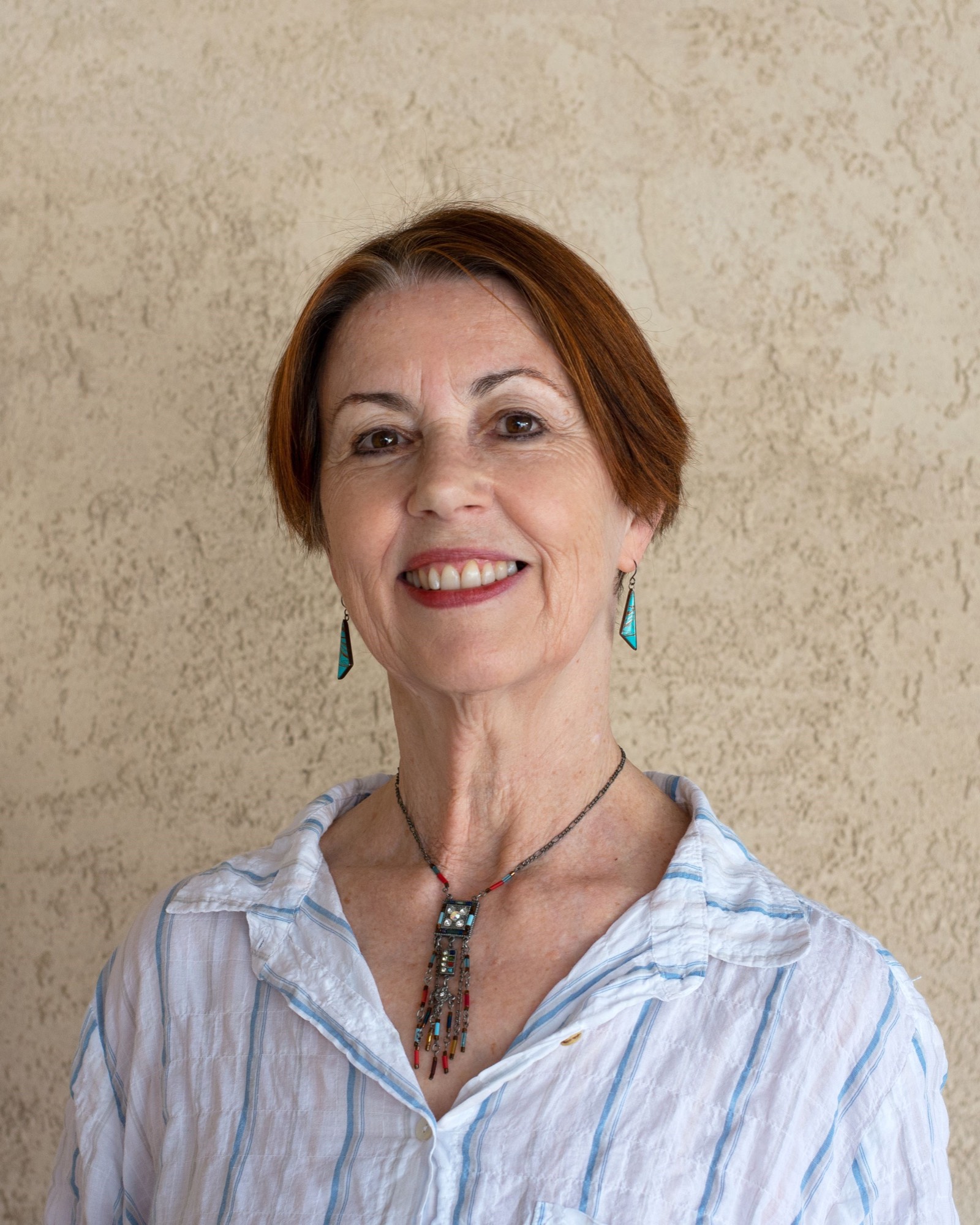
Valerie Komkov Hill (BFA, 1973; BA 1976; MA 1987) is a familiar name to many in the School of Theatre & Dance and Lubbock communities. She has been widely recognized for her artistic contributions and has helped shape the lives and careers of a generation of Lubbock dancers. Komkov Hill has lived – and continues to live – a rich artistic life right here in the Hub City.
Born in England in 1950 to a Russian father and English mother, Komkov Hill's origin story has all the elements of epic cinema. Her paternal grandmother, who is said to be a direct descendent of the Romanovs, died at twenty-three of cholera (or something similar). Her paternal grandfather, thought to have been killed in the Russian Revolution, was a doctor and political radical. The family recently learned that he survived until 1938 or so when he was tracked down by Stalin's army and shot. Orphaned after his mother's death, Mr. Komkov was put on a train to Poland at three years old with just a name tag. Raised by two female cousins during the era of Nazi occupation, Mr. Komkov learned to hate fascism and spent some of the second world war in Egypt, during Rommel's campaign, before making his way to England to join the Royal Air Force as a pilot. He married Komkov Hill's mother in London after the war.
Soon after Komkov Hill was born, the family moved to Johannesburg, South Africa, then to Northern Rhodesia, now Zambia. When she was seven years old, to flee the brewing trouble there, the family connected with Mormon missionaries and moved to Salt Lake City where her father taught at the University of Utah. Thus began the stateside chapter of Komkov Hill's remarkable journey.
By 1966, the family was living in Tallahassee, Florida, where her father taught mathematics at Florida State University, and Komkov Hill was beginning her junior year of high school.
Below are some highlights from our conversation.
How did you find your way to Texas Tech?
My senior year of high school, I got into theater. I was shy back then, but my theater teacher, a little old feisty lady who had Faye Dunaway as a student a few years earlier, convinced me go to a UIL [University Interscholastic League] meet. I choose a monologue from Neil Simon's Barefoot in the Park for the humorous interpretation competition, traveled to Tampa on a bus for the regional meet, and got second place. I was thinking, “Wow! I didn't expect that!”
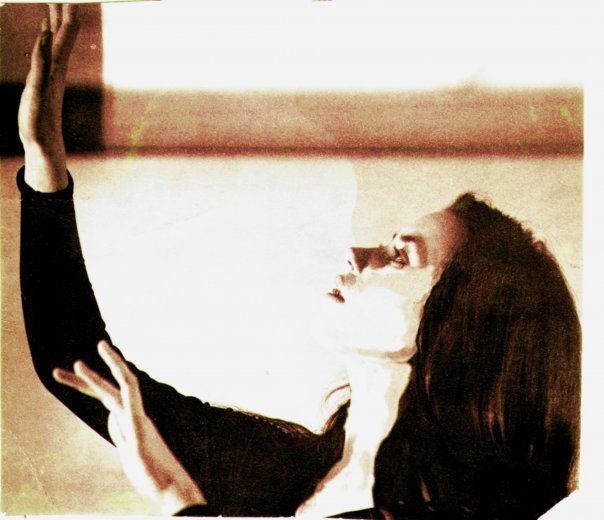 When I started college at Florida State, I signed up for a theater course, but art
became my chief focus. I kept taking dance courses, though. In the fall of 1969, my
dad got a job teaching in the math department at Texas Tech. With the whole family
was moving to Lubbock, I planned to stay behind, but I didn't have many friends in
Tallahassee and suddenly got cold feet. So, I thought, “I'll go to Texas. That'll
be a new adventure.”
When I started college at Florida State, I signed up for a theater course, but art
became my chief focus. I kept taking dance courses, though. In the fall of 1969, my
dad got a job teaching in the math department at Texas Tech. With the whole family
was moving to Lubbock, I planned to stay behind, but I didn't have many friends in
Tallahassee and suddenly got cold feet. So, I thought, “I'll go to Texas. That'll
be a new adventure.”
When we first drove into town, my impression was, “This is the most barren, bleak place I've ever seen."
I never pictured myself staying here, but it's kind of a vortex, isn't it? Just when you think you're out, it sucks you back in. There's just something about Lubbock, and it is more compelling now that I'm retired. It has such a thriving arts community, and I know all the artists and the dancers in town. I'm a part of these communities, and I'm doing exactly what I want to do.
That's wonderful. I'd love to hear about your experience in the dance department at Texas Tech.
Diana Moore [Associate Professor of Dance 1971-2001] was wonderful. At the time, we were the Dance Division of the Physical Education Department. There were probably twelve majors, at most, and two or three minors. When we put on a dance concert, we were in everything. We were dashing around backstage changing in the wings from one dance to another, pouring sweat, and jumping back on stage to be in another dance. I was good at the sewing machine, so I helped with costumes. Occasionally, I choreographed or designed posters. Diana was notorious for late night rehearsals. I remember once, it was the first technical rehearsal, and it took forever to get the lighting set. Diana was not pleased with anything, and she wanted to make some last-minute changes to her choreography. We were there until four in-the-morning!
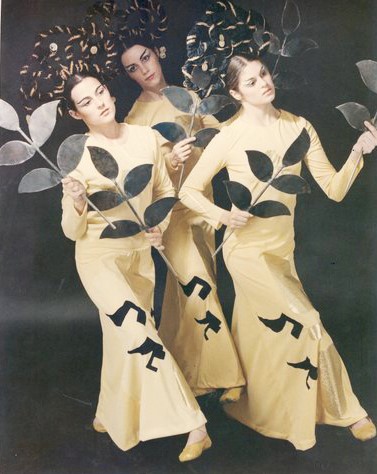 For this dance called The Swords of Moda Ling, a huge Japanese mythology production, we had giant head dresses and long skirts.
Diana found a metal artist who made these heavy, dangerous wire leaf sculptures with
sharp pointy ends that we had to carry in each hand. The men dressed as samurais and
carried machetes – real machetes!
For this dance called The Swords of Moda Ling, a huge Japanese mythology production, we had giant head dresses and long skirts.
Diana found a metal artist who made these heavy, dangerous wire leaf sculptures with
sharp pointy ends that we had to carry in each hand. The men dressed as samurais and
carried machetes – real machetes!
The music fires up, the butterfly splits down the middle, the curtains open, and we all enter dancing – it was very modern. Very Martha Graham. Everything kicks up, we're swinging our metal leaves, the guys are swinging their swords, and suddenly there's a spray of blood! Everything comes to a screeching halt. “Who's hurt, who's hurt?” Turned out it was Rob McGrath (BA, 1975). A bunch of the guys bundle his hand up and take him to the infirmary infull samurai costumes at eight o'clock in the evening. I wish I could have seen the look on that nurse's face.
How did you become the Lubbock High School dance teacher?
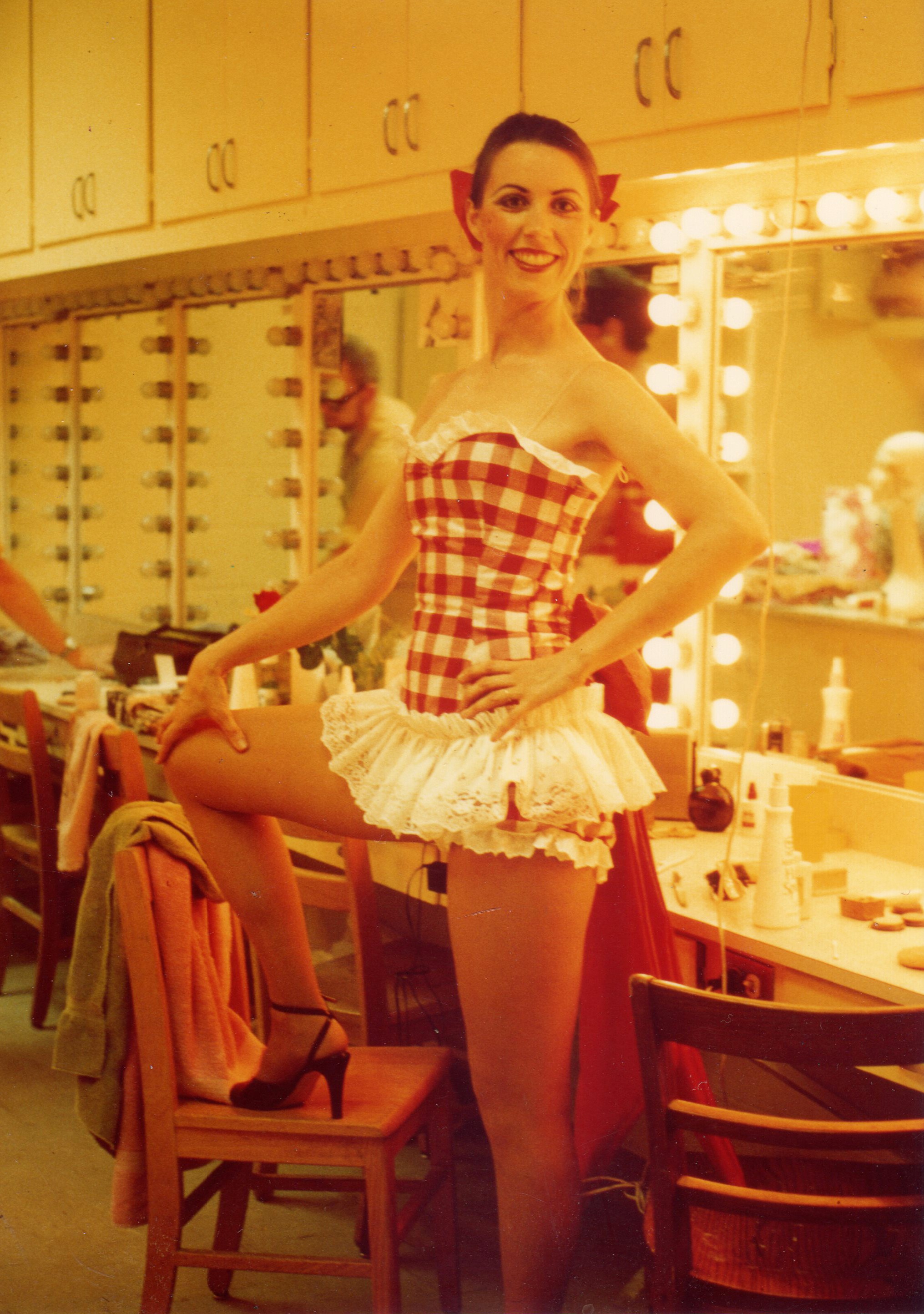 I wasn't sure what to do with myself. I really wanted to sell my art, but that was
going to leave me poor. I decided to be a substitute teacher which would allow me
to do my art on the side. Around 1980, you could make about thirty dollars a day and
that was a pretty good deal. After my second year, the Lubbock Independent School
District started a dance program at Lubbock High School. The first dance teacher they
brought in got pregnant and they discovered that I was a substitute teacher with a
degree in dance. She took about six weeks off for maternity leave right when they
were planning their spring recital with all the dance classes, so I got a lot of practice
putting on a dance concert by myself. The very next year, she got pregnant again–exactly
one year later—so, I put on another recital! After that year, she moved to Chicago
to go to medical school. The principal, Knox Williams, agreed to hire me but only if I worked on getting my teaching certificate.
I wasn't sure what to do with myself. I really wanted to sell my art, but that was
going to leave me poor. I decided to be a substitute teacher which would allow me
to do my art on the side. Around 1980, you could make about thirty dollars a day and
that was a pretty good deal. After my second year, the Lubbock Independent School
District started a dance program at Lubbock High School. The first dance teacher they
brought in got pregnant and they discovered that I was a substitute teacher with a
degree in dance. She took about six weeks off for maternity leave right when they
were planning their spring recital with all the dance classes, so I got a lot of practice
putting on a dance concert by myself. The very next year, she got pregnant again–exactly
one year later—so, I put on another recital! After that year, she moved to Chicago
to go to medical school. The principal, Knox Williams, agreed to hire me but only if I worked on getting my teaching certificate.
I applied for an interdisciplinary master's degree and picked three separate disciplines, taking twelve or fifteen hours in each. One discipline was education, the other was art, and the third was in PE – they didn't have a master's degreein dance back then. I took kinesiology, motor control, and psychology of sport. That was a whole different level of analyzing the human body, movement, and muscles.
When did you really start to engage with your studio art?
That took a backseat for decades while I was teaching and raising kids. Sometimes I worked on art during the summers, or occasionally I would put something in a show. Since I've been retired – probably starting around 2009 or 2010 – I got the bug again. Around then I also got involved with Flatlands Dance Theatre. I've been on their board since they started up in 2010.
Did you ever perform with Flatlands?
I've appeared in my own choreography a couple of times – once as a dog in a dance called What the Flock?. It's okay to ask yourself to be a dog. It's hard to ask others.
I imagine so.
I like to say that I'm the oldest person who has performed for the Flatlands Dance Theater. That's a whole other thing now. Dancers don't quit in their mid-30s anymore; they just keep on going. But the artwork has kind of taken over and snowballed. I've done quite well.
You know, everybody talks about what they did during COVID. Some people drank a lot. I wrote a book (Clive the Lonely Llama). I don't know why. I didn't intend to write a book, just like I never intended to be a teacher. Things just happen. I was doing some small abstract paintings and I didn't like the way one of them was going. I thought, “This looks kind of boring. I'll put a llama on it.” Then, it just seemed like the llama needed a house. So, I painted this funny little house next to the llama. And then I gave him a name. I don't know why I called him Clive. I did a couple more paintings of Clive, and suddenly, the story clicked in my head.
Originally, I was using one of those photo printing companies and would give a printed copy to a friend or a relative for Christmas. Those copies ended up being expensive, with shipping and everything, about $75 per book. That's when I just stumbled onto Wild Lark Books and learned that they were looking for local authors.
How would you describe your art?
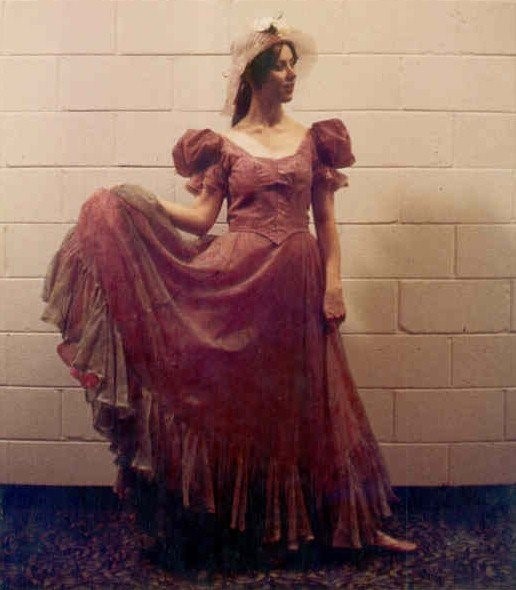 My art, like everything else I've done in life, is varied. I've done landscapes, but
have enjoyed doing animals, recently–people, not so much. Sometimes, someone will
want to hire me to do a portrait, but I don't have that skill. I think my portraits
tend to look rather forced and stiff, whereas with animals, it's easier for me to
capture their energy and color—their vibrance. I also like painting abstracts. Color
and texture unify my artwork. I think I have an intuitive feel for colors – what looks
good together and what looks slightly quirky. Also, as an art quilter, I'm used to
working with fabrics and throwing fabrics against each other and seeing what colors
and textures work. Just like with everything else in my life, I'm a bit all over the
place.
My art, like everything else I've done in life, is varied. I've done landscapes, but
have enjoyed doing animals, recently–people, not so much. Sometimes, someone will
want to hire me to do a portrait, but I don't have that skill. I think my portraits
tend to look rather forced and stiff, whereas with animals, it's easier for me to
capture their energy and color—their vibrance. I also like painting abstracts. Color
and texture unify my artwork. I think I have an intuitive feel for colors – what looks
good together and what looks slightly quirky. Also, as an art quilter, I'm used to
working with fabrics and throwing fabrics against each other and seeing what colors
and textures work. Just like with everything else in my life, I'm a bit all over the
place.
These days, Komkov Hill spends her time in her home studio in Lubbock's Tech Terrace neighborhood where she continues to add to an impressive volume of paintings and fiber artworks. She also leads weekly yoga classes at the local community center. Maintaining a vibrant, youthful spirit, she would likely walk away with a large stuffed animal from even the savviest carny who would challenge her to “Step right up!” and attempt to guess her age.
Komkov Hill's artwork frequently appears in regional showcases, and she currently has a fiber artwork representing Texas landscapes touring the state with a collection curated by The Studio Art Quilters Association's Texas branch.
Copies of Clive the Lonely Llama can be purchased directly from the Wild Lark Bookstore and from most other online booksellers. To view more of her artworks, visit her website. To access her works that are currently available for purchase, visit her etsy site. Komkov Hill also maintains an art-filled blog entitled, The Adventures of Valya.
